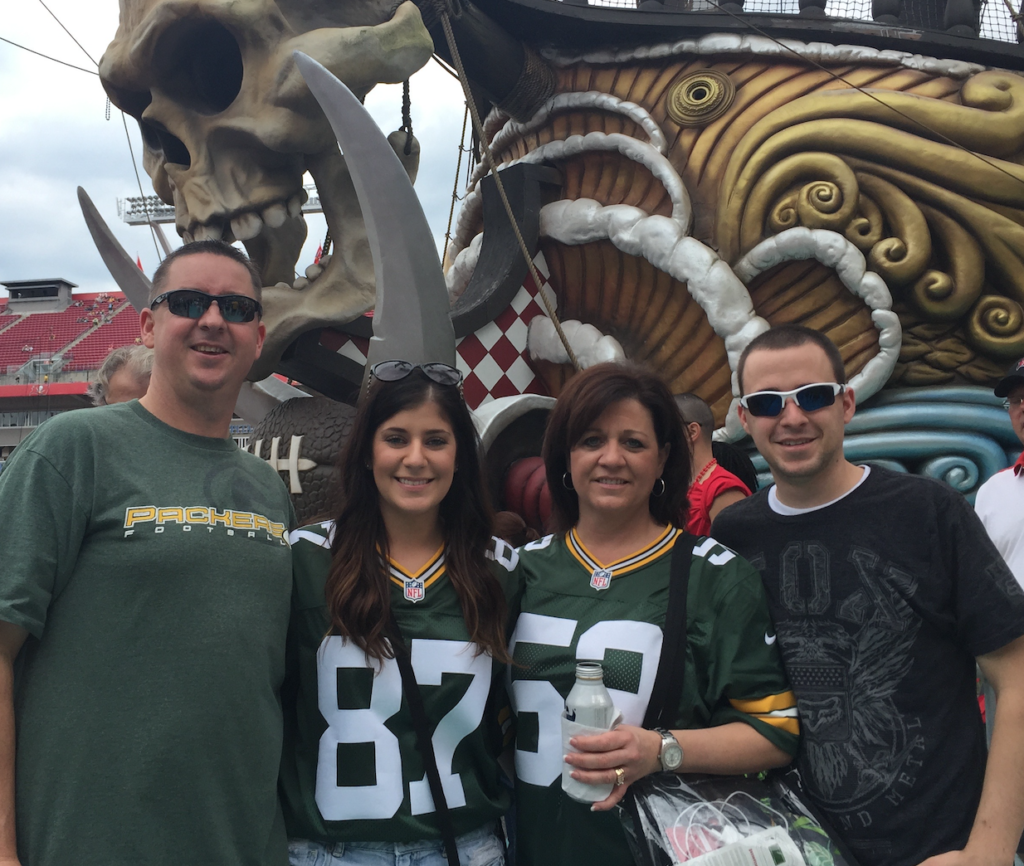October 3, 2019
Staying Strong as a Caregiver: Day to Day Life Changes

Written by: Courtney Benisch – Regional Relationship Coordinator for Head for the Cure
Once you become a caregiver, your life changes instantly. Roles will reverse in the household and it will change the way you go about doing things day to day. As a 23-year-old caregiver, I made a drastic life change after my mom was diagnosed with a Glioblastoma in 2016: I immediately moved back in with my parents to help take care of her. Thankfully, my step-dad, brother, and I all had jobs that were flexible and allowed us to spend as much time with my mom as we could.

Suddenly your life is filled with doctor’s appointments, therapy appointments, and your “normal” life schedule isn’t so “normal” anymore. You learn more medical terms in a few doctor’s appointments than you would ever expect to in a lifetime. I learned more about short-term and long-term disability, and what Explanation of Benefits were in a matter of one phone call than I expected to before I was 50. I remember telling my mom’s best friend that my brother and I doubled our age seconds after my mom was diagnosed.
Since I lived with my parents again, yes that meant home cooked meals, but it also meant learning all the names of the different medications my mom was now taking: chemotherapy pills, anti-nausea pills to offset the chemo, steroids, blood thinners, the list goes on and on. Plus, you have to recite those and the dosages every time you go into a doctor’s visit. Did I mention knowing the side effects, too? My mom developed blood clots from one of her chemotherapy treatments, and we had to constantly check for the symptoms. She did unfortunately develop them, and we had to go to the emergency room at 4am one morning because it was so bad.
Due to the location of the tumor in my mom’s brain, she had to attend physical therapy and occupational therapy throughout her treatment. My step-dad and I would take turns taking her to these so the other could do things around the house, catch up on work, or even take a nap. My mom had severe balance issues, so the physical therapy was supposed to help her regain strength in her legs and better her balance. She was dependent on holding onto something while walking, whether it was a walker, the kitchen counter, or our hand.
Brain tumors are unlike any other tumor due to the nature of their location. Where they are in the brain has a huge effect on a person’s functions more than any other tumor would. Occupational therapy was needed because my mom’s memory loss and lack of cognition. We weren’t sure if she was going to remember how to brush her teeth or take a shower, so that’s what OT helped with. She had homework to do after each visit, just like I had homework growing up after school.
As a caregiver you live through everything the patient is going through day in and day out. For me, that still is the hardest part. You cognitively see how this disease affects a person drastically. The biggest change for me was my perspective on life. I woke up every morning not knowing if it was going to be the last day with my mom, and that changes you. You realize life is way too short to sweat the small stuff and you can’t plan your life years out. Everyone who knew my mom enjoyed each day with her as they could, and I know we all cherish that to this day.
As I mentioned in my previous article, being a caregiver doesn’t stop. You will carry that title for the rest of your life, and you should do so with pride. You honored your loved one in the best way possible, just being there for them through thick and thin. Whether your loved one is here with us today or has passed, they know that you did the best you could during a very difficult time.
Brains for the Cure is a different kind of resource for patients and caregivers and it is helping people adjust to their new “normal” life the best they can. If I knew about it when my mom was sick, it would have made things a lot easier on us. The Patient Resource Guide is an amazing item that BFTC created and it can help you in so many ways. It gives you definitions for all the medical terms that come into your life, it has a space to write any notes the doctor may give you, and more. You can print out your own guide here.